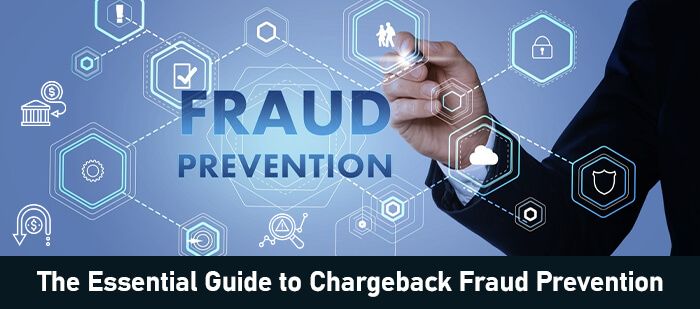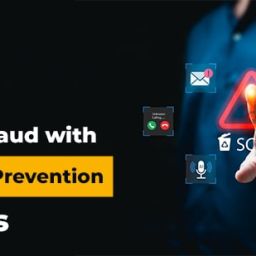
Chargeback fraud is a growing problem for businesses of all sizes. It occurs when a customer disputes a legitimate charge on their credit card, resulting in the business losing the payment and potentially facing additional fees and penalties. With the rise of online shopping and contactless payments, chargeback fraud has become even more prevalent and harder to detect.
That’s why it’s essential for businesses to have a solid chargeback fraud prevention strategy in place. In this blog post, we will explore the key steps businesses can take to protect themselves against chargeback fraud and minimize its impact on their bottom line. From identifying red flags to implementing best practices, this essential guide will equip you with the knowledge and tools needed to prevent chargeback fraud.
Understanding Chargeback Fraud and Its Impact on Businesses
Chargeback fraud, also known as “friendly fraud,” occurs when a consumer makes an online purchase with their credit card and then requests a chargeback from the issuing bank after receiving the purchased goods or services, falsely claiming the transaction was unauthorized or the item was never delivered.
This not only results in lost revenue for the business but can also lead to additional charges, increased payment processing fees, and a damaged reputation with payment processors and banks. Over time, businesses that are frequently targeted by chargeback fraud may face higher processing fees or, in severe cases, the loss of their merchant account, which is essential for processing credit card transactions.
Moreover, the administrative burden of managing chargeback disputes is significant, diverting resources away from core business operations and into dispute resolution. As chargeback fraud becomes more sophisticated, with fraudsters exploiting the protective measures meant to safeguard consumers, it’s imperative for businesses to understand the dynamics of these fraudulent activities and the substantial impact they can have on operational efficiency and profitability.
Some Related Blogs
- Chargeback Blacklist: A Comprehensive Guide
- Single Chargeback Cost: A Comprehensive Guide
- Understanding Hotel Chargebacks: An Essential Guide
- How to Successfully Navigate a Debit Card Chargeback
Identifying Common Red Flags for Chargeback Fraud
Identifying common red flags for chargeback fraud is crucial in its prevention. One major red flag is a sudden increase in high-value transactions from a single customer or a series of transactions in a very short time frame, which could indicate someone testing stolen credit card information.
Another indicator is when customers use multiple cards to make purchases after previous transactions were declined. Pay attention to orders that significantly deviate from the average purchase size or frequency typical for your business. Additionally, orders shipped to multiple addresses or international destinations that do not align with the customer’s billing address might suggest fraudulent activity. Be wary of customers who cannot provide detailed information about the order or who use vague or generic email addresses.
Requests for expedited shipping without regard to cost can also be a warning sign, as fraudsters are often in a hurry to receive goods before the fraud is detected. Lastly, an unusual number of returns or inquiries about the credit card charge process from a customer may precede a chargeback request and should prompt further investigation. Recognizing these red flags can help businesses preemptively address suspicious activities and adjust their prevention strategies accordingly.
Implementing Effective Verification Processes
Implementing effective verification processes is a critical step in chargeback fraud prevention. Businesses should consider integrating tools like Address Verification Service (AVS) and Card Verification Value (CVV) checks during the transaction process.
These measures help ensure that the cardholder is in possession of the card and that the billing address matches what the bank has on file. Employing two-factor authentication (2FA) for online transactions can add an additional layer of security, requiring customers to verify their identity through a separate device or method. It’s also prudent to monitor for unusual transaction patterns or behaviors that deviate from a customer’s typical purchasing habits.
For larger or more suspect transactions, implementing manual review processes or reaching out to customers for additional verification can help confirm the legitimacy of the purchase. Training staff to recognize and respond to potential fraud indicators effectively can also bolster your verification processes. By taking these proactive steps, businesses can significantly reduce the risk of falling victim to chargeback fraud, safeguarding their revenue and reputation in the process.
Utilizing Fraud Detection and Prevention Tools
To fortify your business against chargeback fraud, leveraging advanced fraud detection and prevention tools is essential. These systems utilize machine learning algorithms and large datasets to identify patterns indicative of fraudulent activity.
By analyzing purchasing behavior, geolocation data, and device fingerprinting, these tools can flag transactions that deviate from established norms. Many also offer real-time analysis, providing immediate alerts so businesses can take action before a chargeback occurs.
![]()
Email us anytime!
Email customer service 24/7
![]()
Call us anytime!
Reach customer care 24/7 at +1 (888) 901-8653
Integrating these systems with your transaction processes allows for a seamless operational flow, where suspect transactions are automatically identified without slowing down legitimate purchases. Additionally, some platforms offer customization options, enabling businesses to adjust settings based on their specific risk tolerance and industry requirements.
By making use of these sophisticated technologies, companies can stay one step ahead of fraudsters, reducing the likelihood of chargeback fraud and minimizing its financial impact. It’s important, however, to regularly update these systems and stay informed about new fraud detection methodologies to ensure your defenses remain strong in the face of evolving threats.
Creating a Comprehensive Chargeback Dispute Strategy
Crafting a comprehensive chargeback dispute strategy involves more than just reacting to disputes as they occur. It requires a proactive approach to detect, manage, and prevent future incidents. Begin by keeping detailed records of customer interactions, purchase histories, and transaction data. This documentation can be invaluable in disputing chargebacks, as it provides evidence to support the legitimacy of the transaction.
Additionally, develop clear policies regarding returns, refunds, and shipping procedures, and communicate these policies effectively to customers to avoid misunderstandings that can lead to chargebacks. Training customer service representatives on how to handle inquiries related to chargebacks and potential fraud is also crucial, as early intervention can often prevent a dispute from escalating.
Establish a protocol for reviewing and responding to chargebacks, assigning dedicated personnel to handle the process if possible. This ensures a timely and effective response, which is critical in adhering to the tight deadlines set by credit card companies for dispute resolution. Lastly, analyze patterns in chargeback disputes to identify any recurring issues or vulnerabilities in your transaction process, allowing you to make necessary adjustments to prevent future occurrences. By adopting a strategic and organized approach to chargeback disputes, businesses can better manage and reduce the impact of these challenges.




